Plovdiv: what to do in a weekend
We arrive in Plovdiv in the morning from Sofia. We left our things in the AirBnB (See: where to stay and how to get around in Plovdiv?) And we went to the first of Plovdiv to see: the Kapana district.
Table of Contents
Kapana: the center of Plovdiv to see and feel
“Kapana” means “the trap.”
Its name comes in its form: they are small and labyrinthine streets from which once you enter you cannot (or do not want, as is our case) leave. It used to be the center of artisanal production of the city, but it has found itself again as the place to go for a coffee or dinner in Plovdiv.
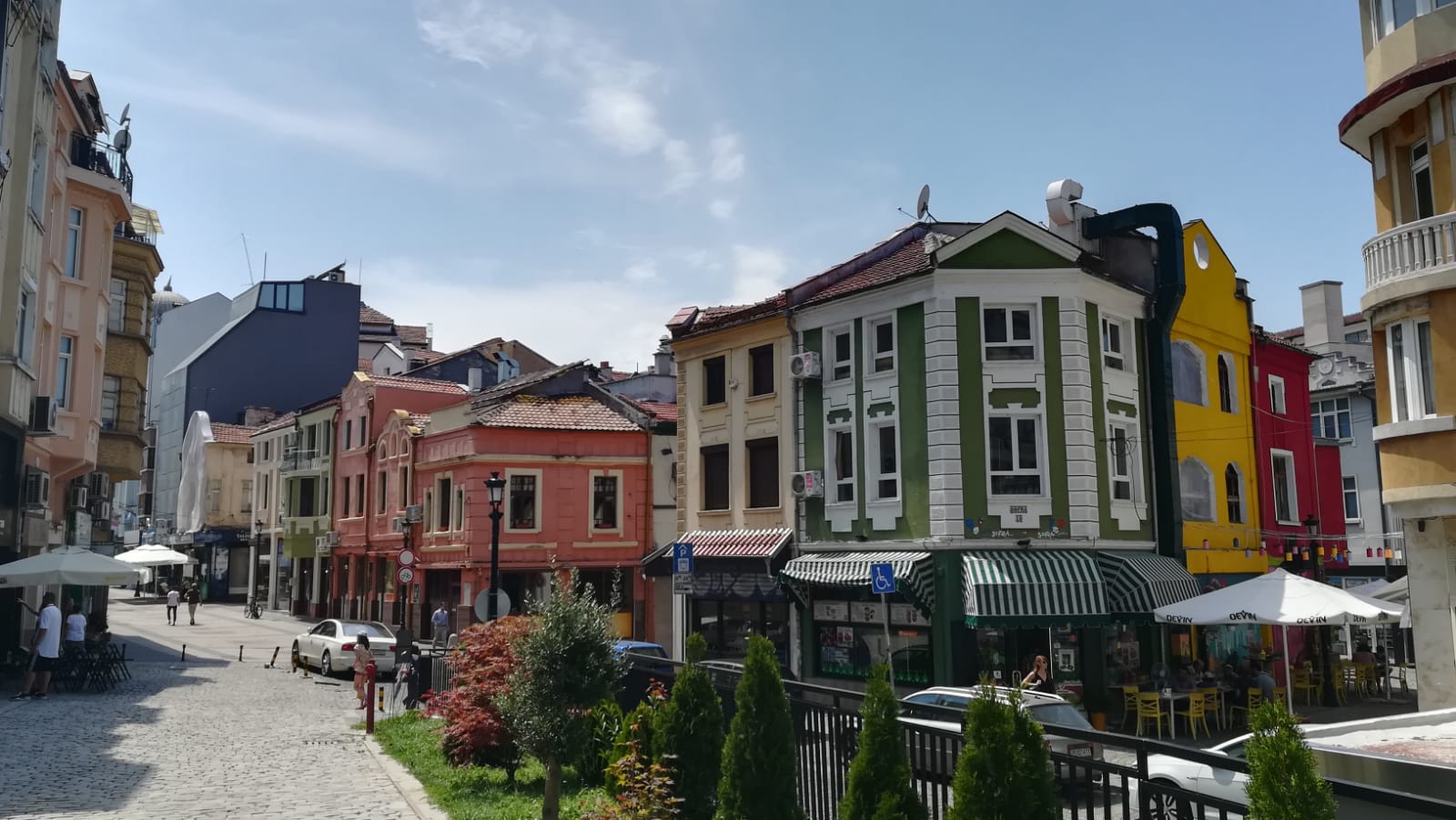
Kapana (this area: Map) is alive: cafes, restaurants and picturesque buildings everywhere (and near the oldest part of the city).
The first thing we did was go eat something. We arrived at Café Multi Culti (6A Abadzhiyska street – map, Facebook), a great Gastro-Pub with a menu in which the two young owners have put a lot of love (and quality). What we had was delicious, including a table of Bulgarian cheeses and homemade Fanta (that I had to order when I saw it). You can see it in these photos that we also put in the Big in Finland Instagram.
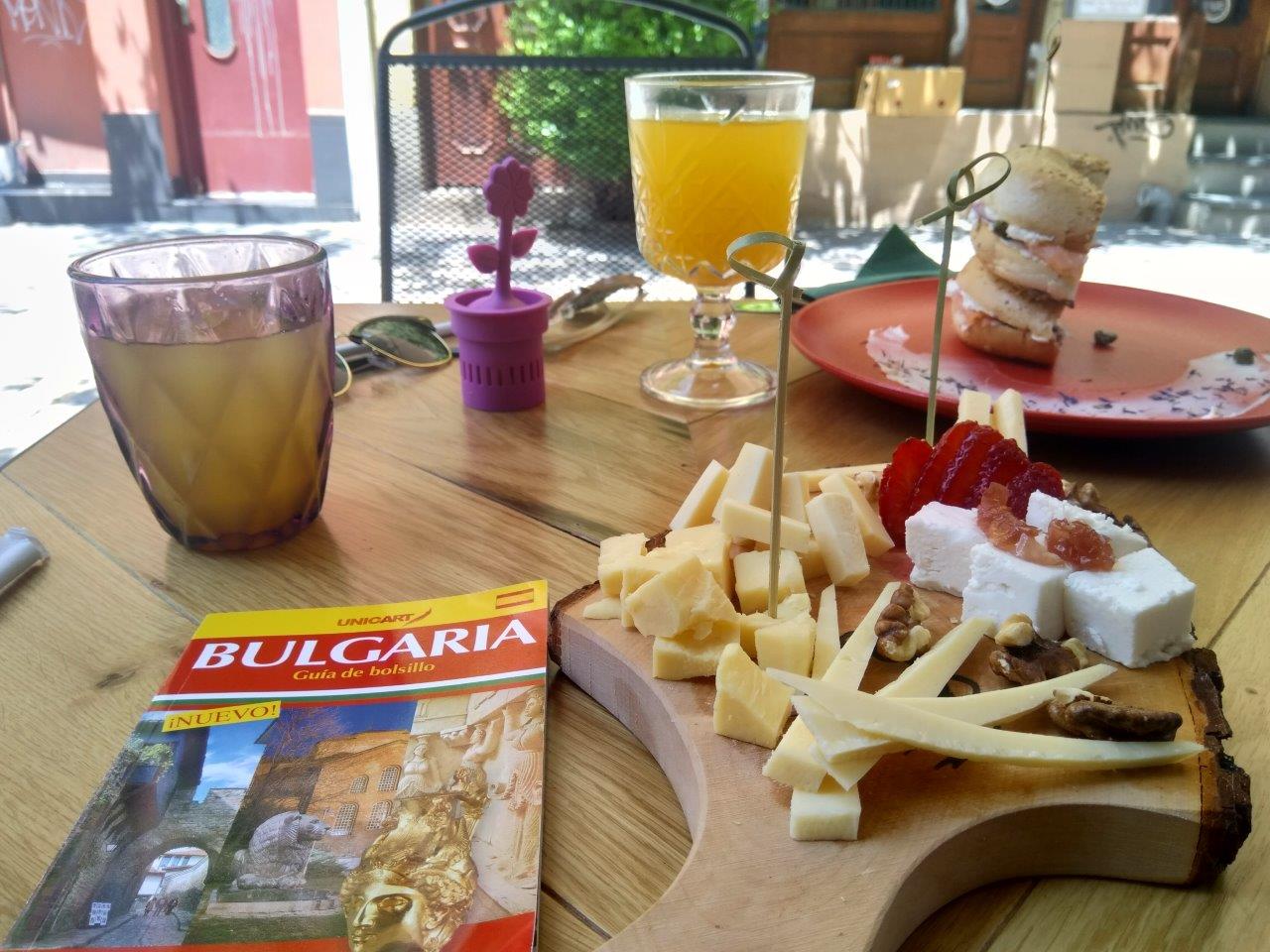
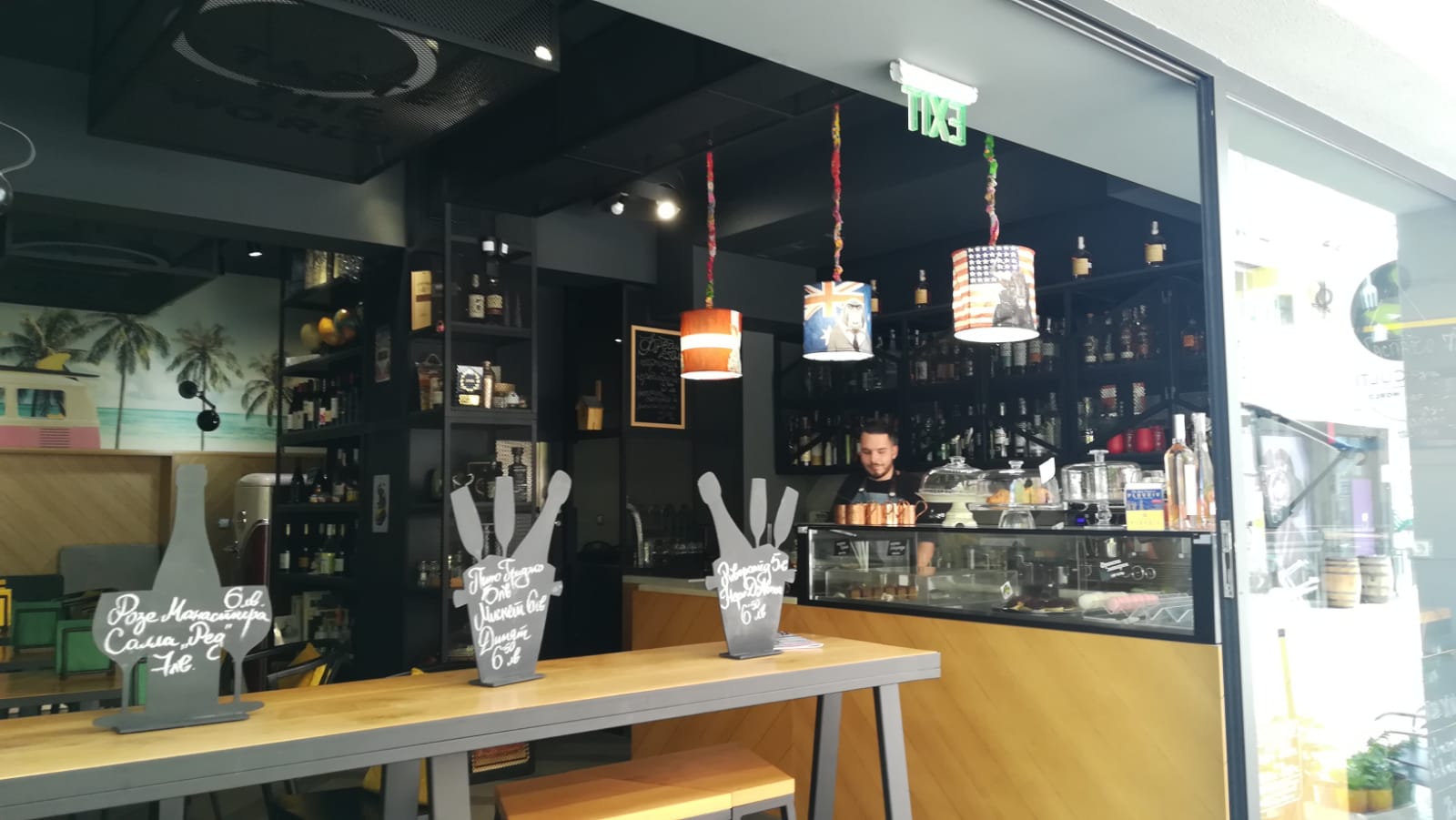
From there we took the “Arts and Crafts District Tour” through Kapana (you can find it here). In addition to picturesque low-rise buildings in the area, dotted with cafes and bars, there is a graffiti battle between the two most important graffiti artists in Bulgaria: Stern (a native of Plovdiv) and Nasimo. We went through the streets trying to identify who the graffiti belonged to (hint: Stern has the same protagonist in his ones, and Nasimo likes triangles and bees). You can see it in this gallery that we put in Insta.
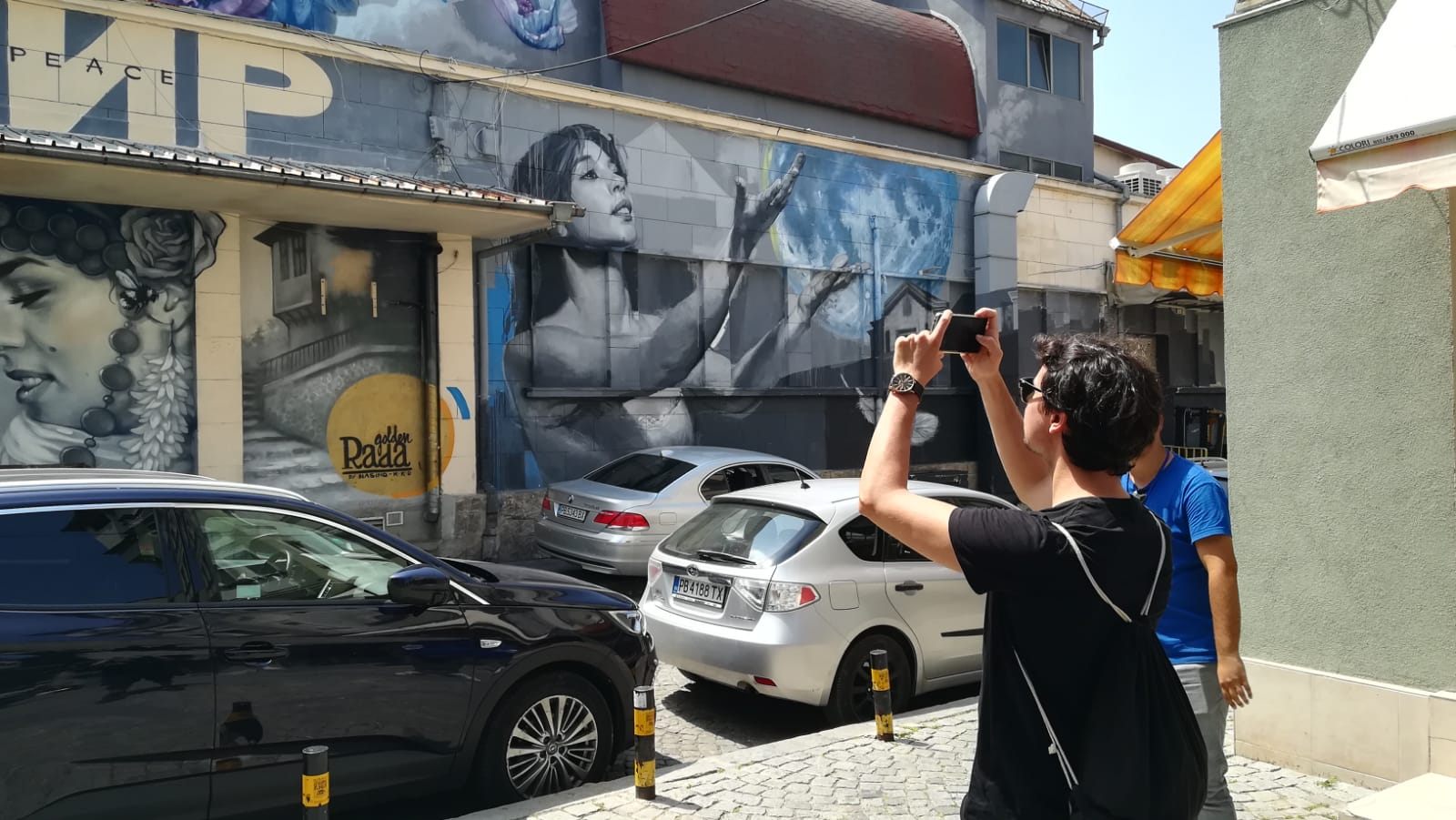
In Kapana we met Giovanna, in her Art Studio Giovanna (address: Frederic Joliot-Curie 6, map), an expert in leather and who has worked with the most prestigious fashion brands in the world, but who returned to her Plovdiv to start a own study. She showed us how leather is worked and we made a pair of keychains with her, which I still carry with me in my backpack today.
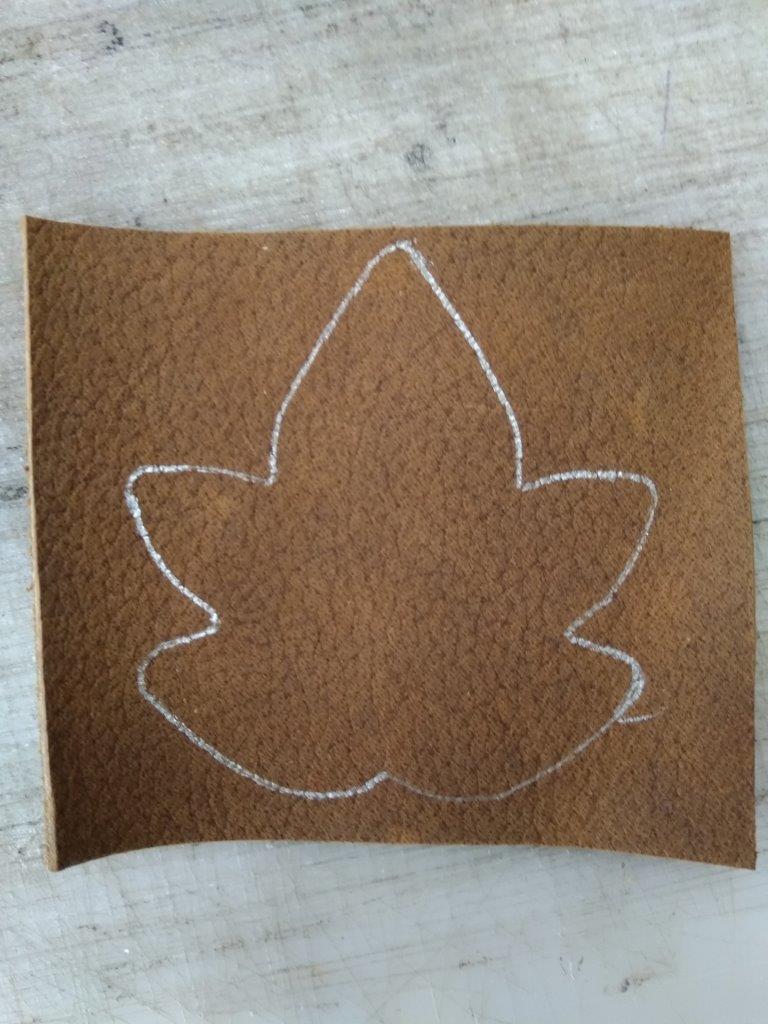
From there we went to see an art gallery of young artists: pLOVEdiv (Pavel Kurtevich Street 3, Map and web), which was almost next door. We walked around the exhibition and to the terrace, with a nice view of Kapana, and before we left we bought a magnet with the motto “Make pLOVEdiv, not Warna”. It still greets from the refrigerator every day. The pun refers to Varna, the city on the coast of the Black Sea of Bulgaria.
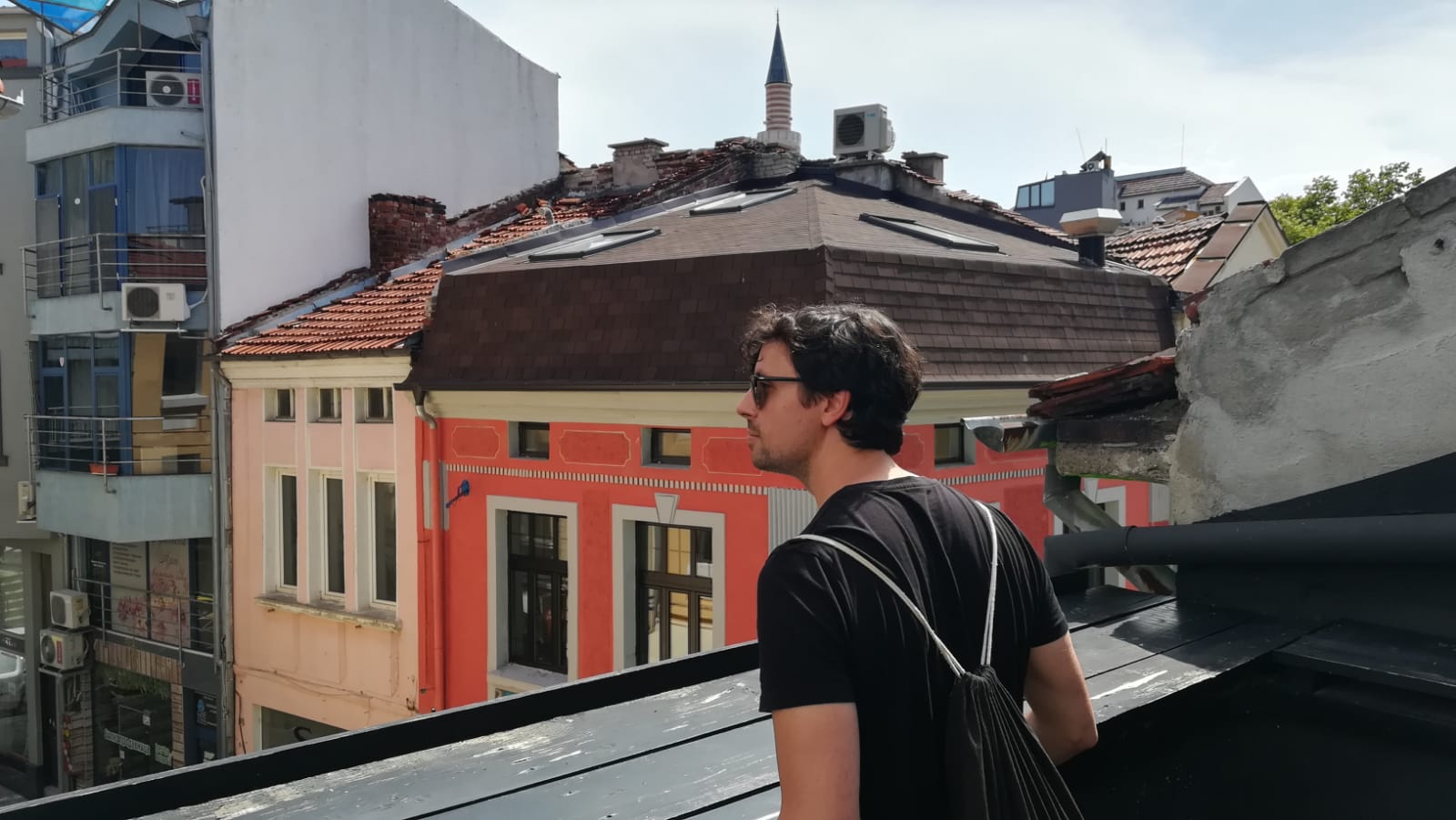
From there we went to have a coffee in the corner, to the gourmet coffee Dukiana Coffee Roaster (map) before going to see the best known monument of Plovdiv.
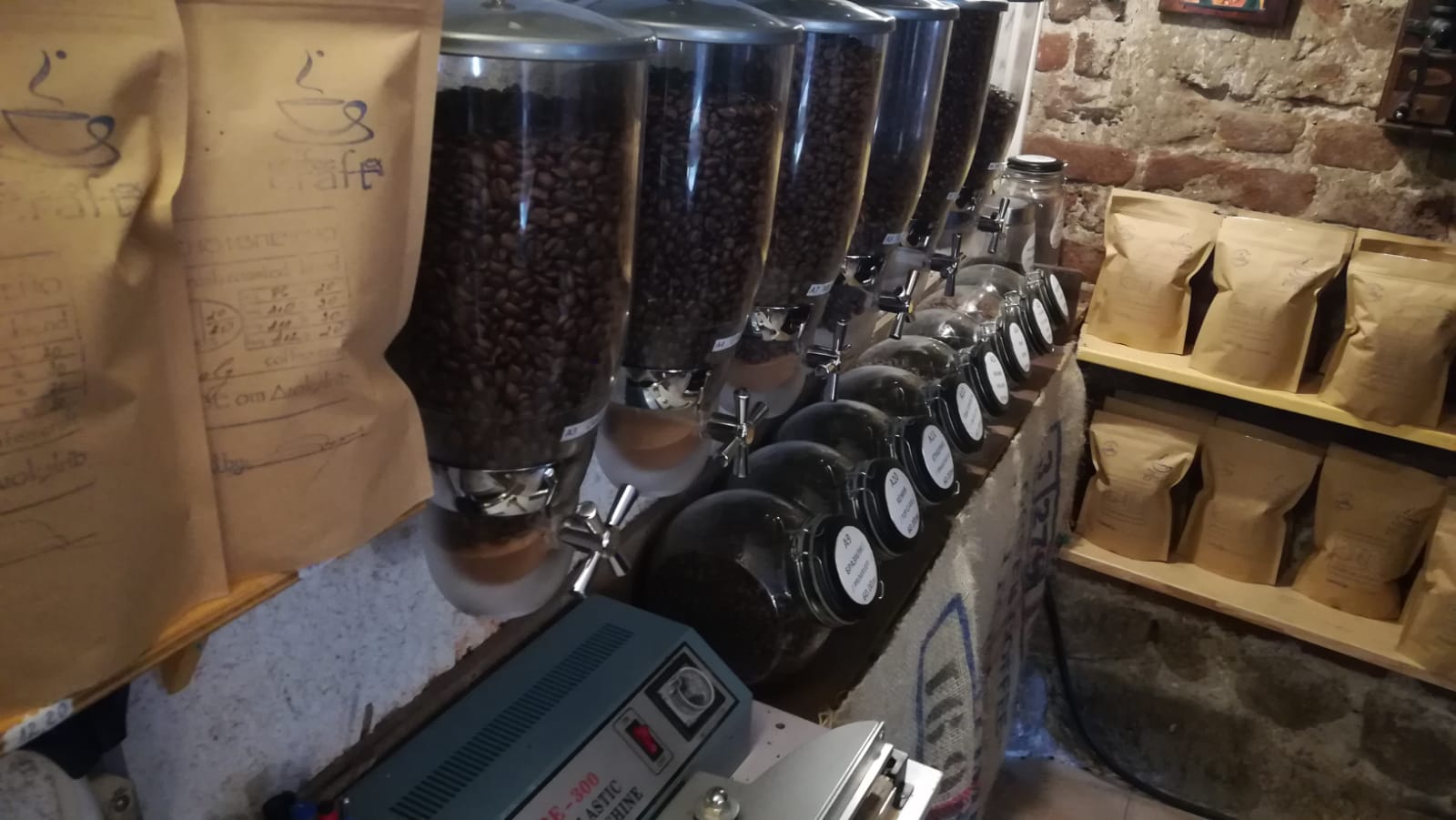
The Roman Theatre of Plovdiv
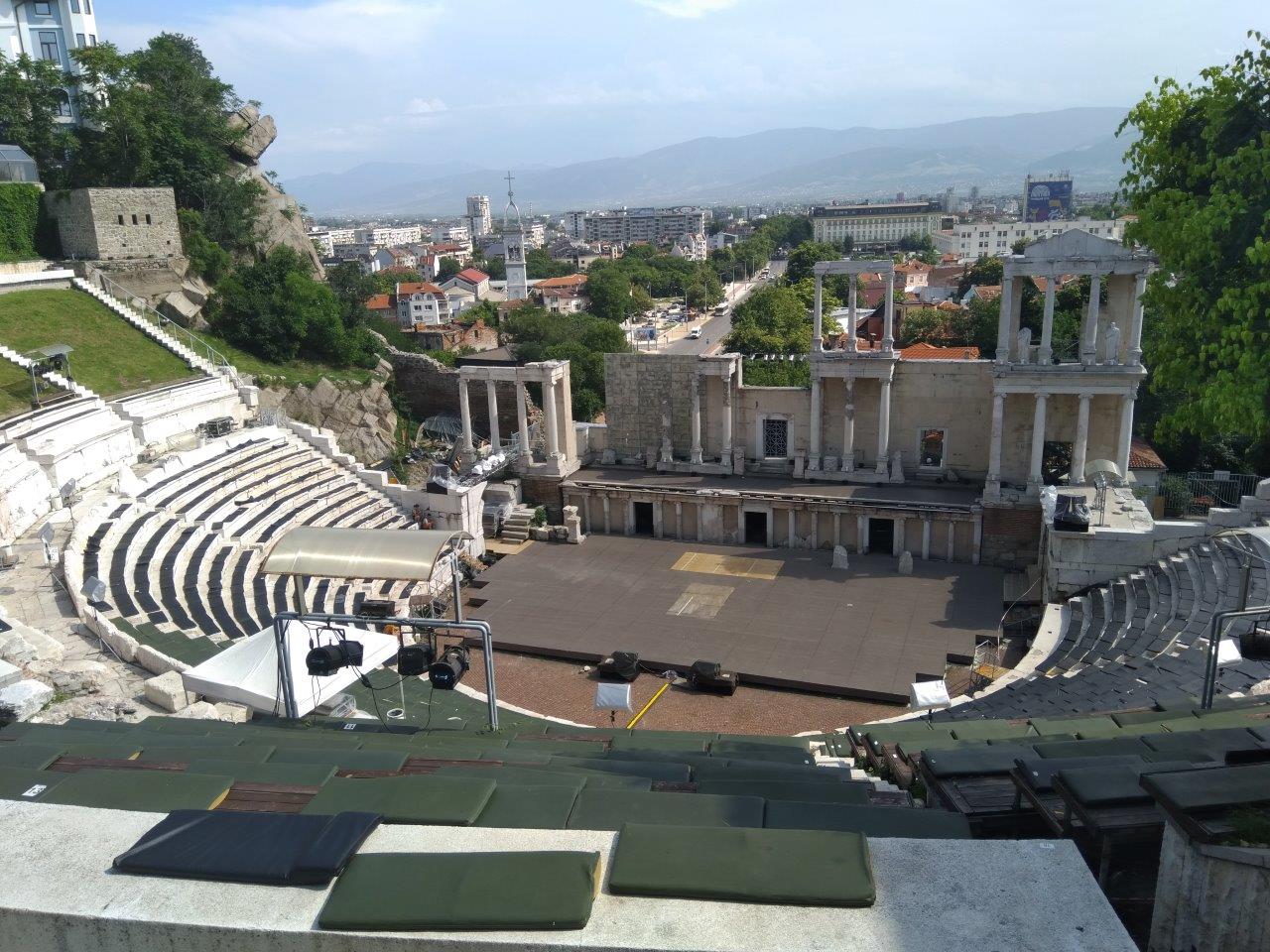
(re)Discovered by a landslide, and located between two of the 7 hills of the city, the Plovdiv Roman theater is erected. It is the best known ancient monument in Bulgaria.
It was built in the year 90, as it could be seen in the inscription discovered and that names the city councilman then: Titus Flavius Cotis. Admission is free with the Plovdiv City Card, which we talked about in the previous post and that you can get here.
It is still used for its original use, and as you can see in the photo they were preparing it for a concert. Something unique to see in the city.
Kapana at night
After resting for a while, we returned at night to have dinner and have a drink and walk through the center at night.
There is a bar / cafe in the Kapana district that is a copy of Friends’ Central Perk (who knows if to save costs they would record something there Bulgaria Of course Bulgaria has a movie studio that houses the shooting of many films), although we chose the Bar opposite, which they recommended for good Gin Tonics.
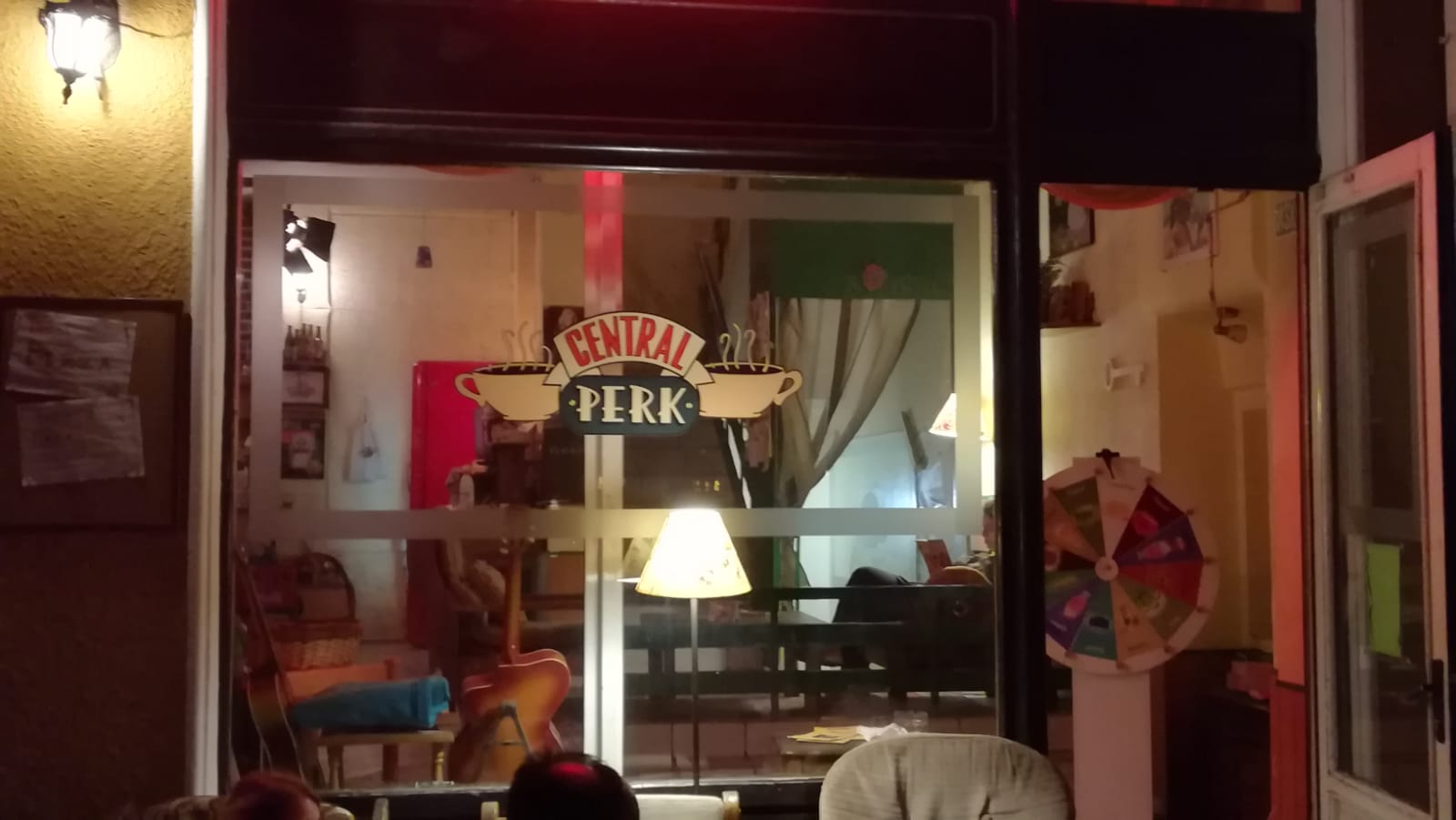
From there, we took a walk to the ancient city of Plovdiv, in one of the hills and with several of the most emblematic buildings of the city, now converted into museums and galleries, which we will talk about in the next post.
Of course, Kapana left us delighted! In the next post we will tell you how we spent the second day in the ancient city. You can read here this second part.
Topics: Traveling around Europe |
1 comment
|  Print This Post
Print This Post
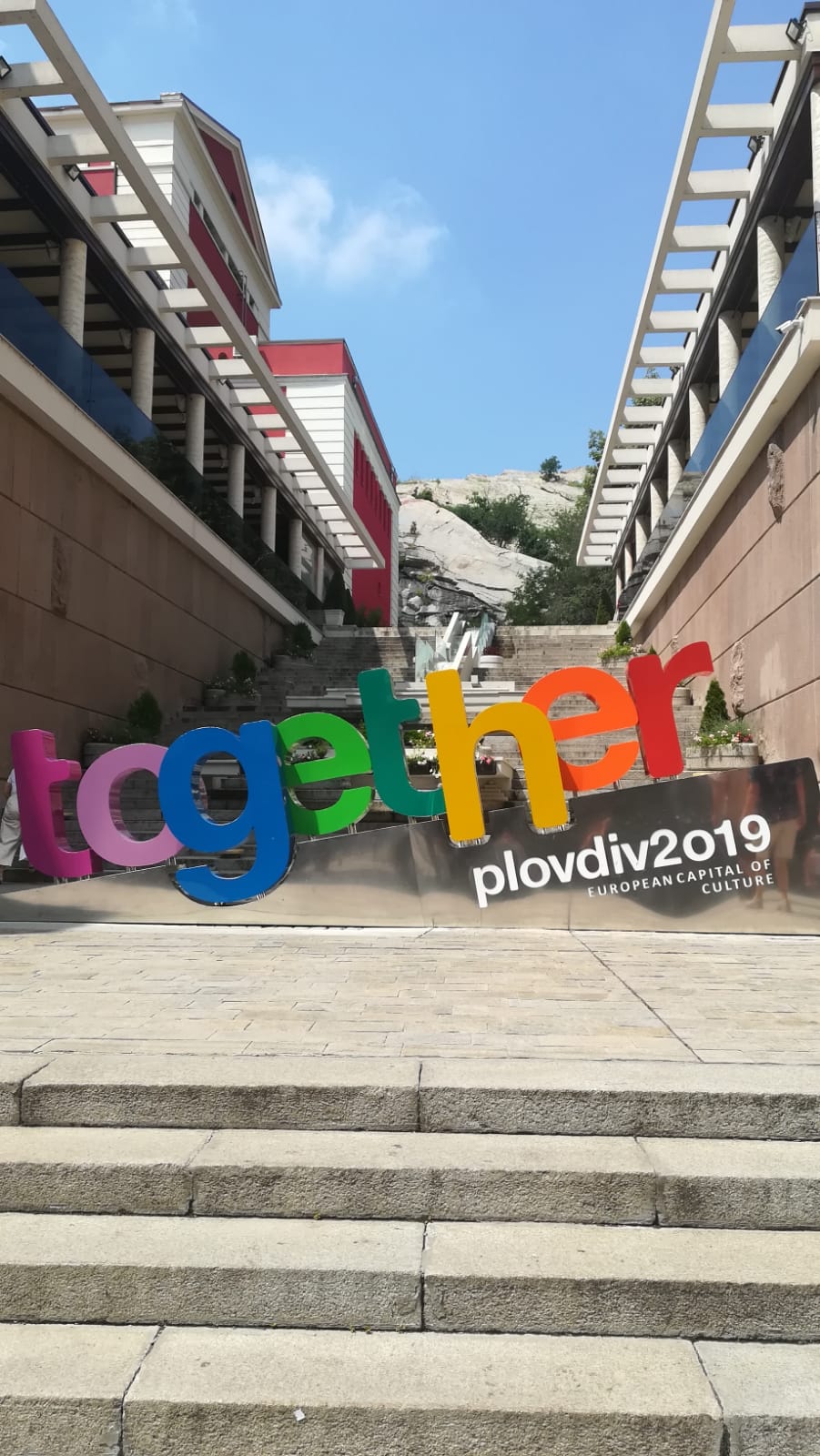
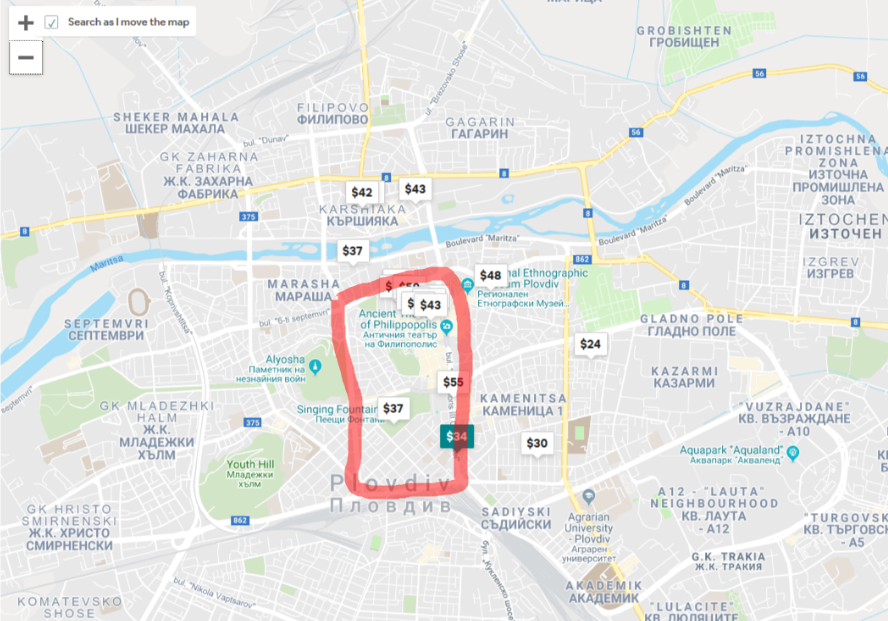
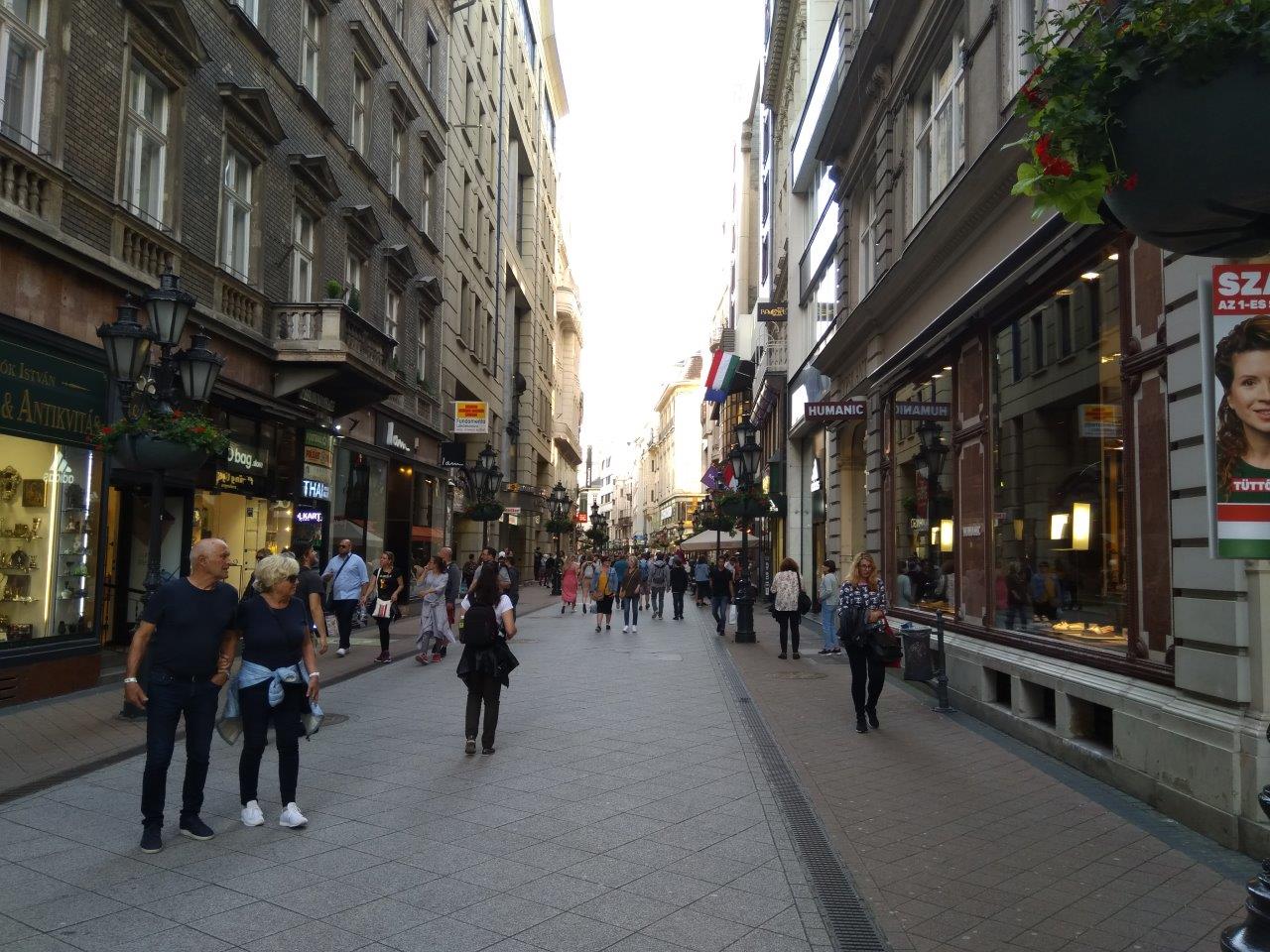
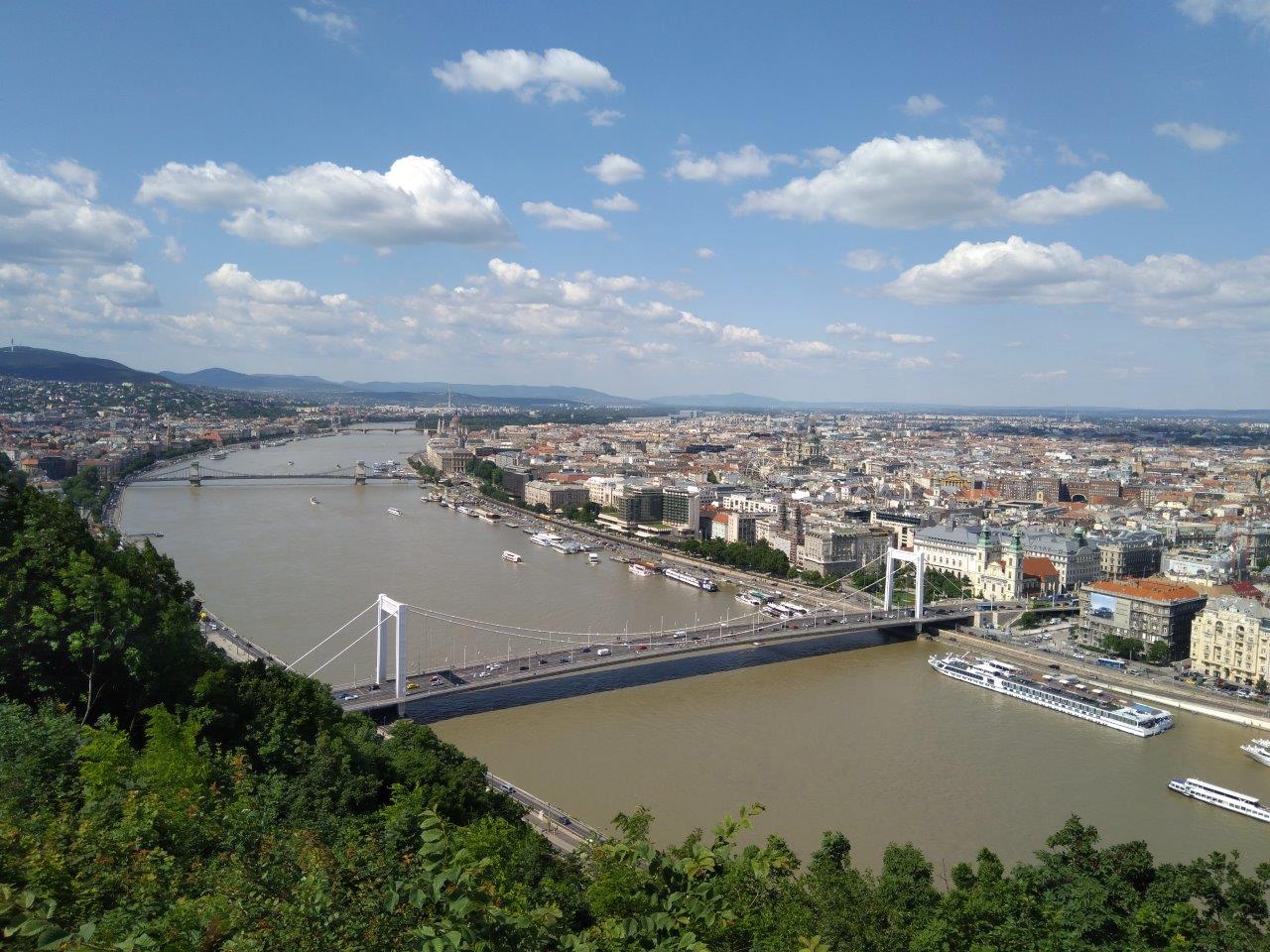

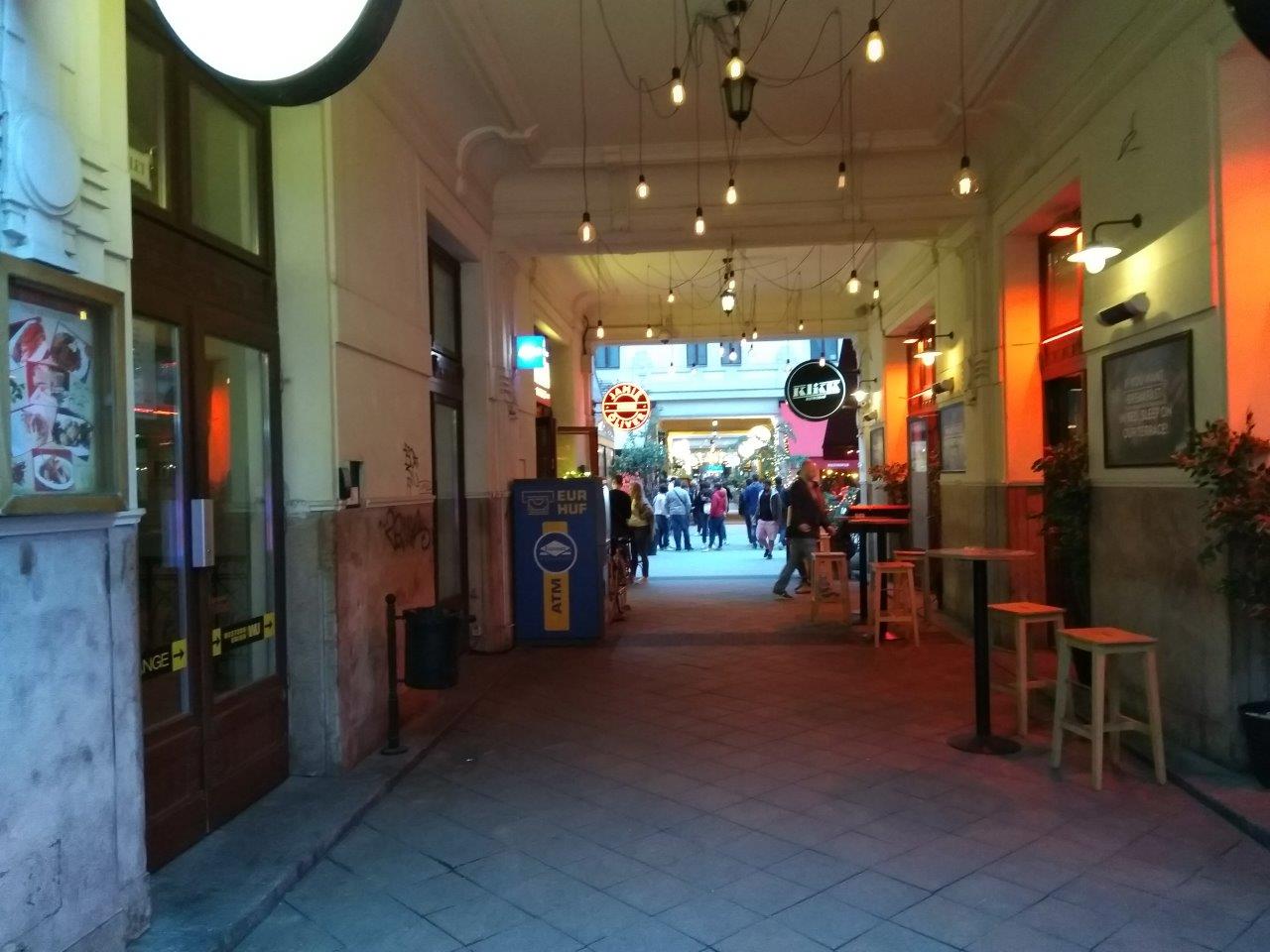
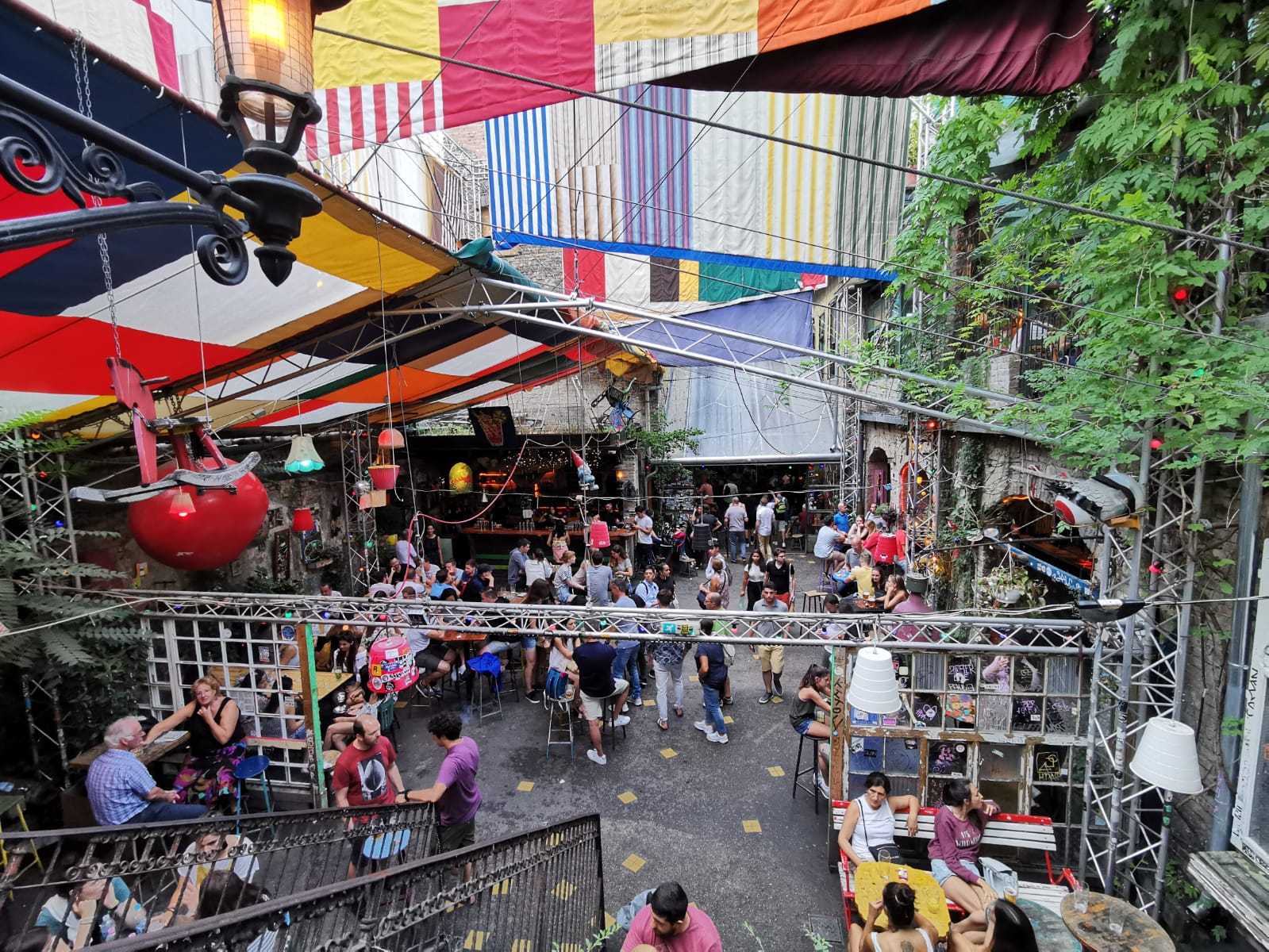



"for no particular reason" yea, sure